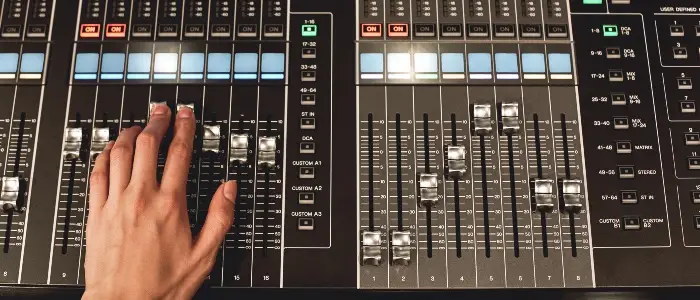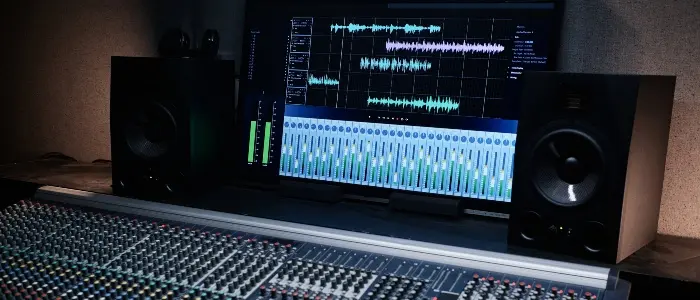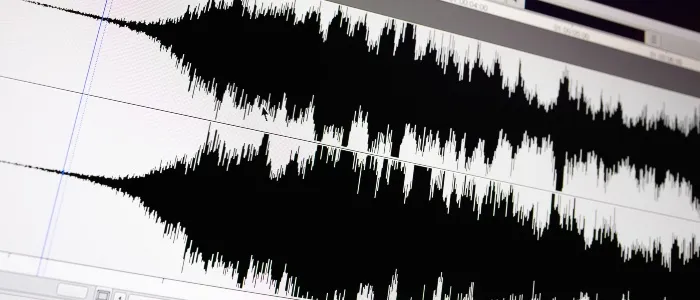An acoustic guitar is a delicate instrument to mix because it’s very dynamic and you need to pay attention to every detail.
If you have never done it, this might sound daunting but with the right approach, your acoustic guitar recording will sound professional.
There are many different ways to mix acoustic guitars and it depends on many things but I will try to make a general guide for you to apply in your work.
Mixing Acoustic Guitar Like A Pro
In this blog post, I will explain the basics of mixing acoustic guitars and techniques that can help you to create the desired sound.
1. The Source Sound Is The Key

No matter what instrument you are mixing, the source sound is the key to great mixes.
So, the first thing you must consider before mixing is to get the best sound possible and capture it with recording.
There are many ways to record acoustic guitars. You can record acoustic guitars with single or multiple mics, record with acoustic-electric guitars, or use some kind of plugin.
The goal of recording is to capture the best sound possible and this depends on many things.
You need to use an acoustic guitar with good sound, install new acoustic strings, create a great sound, and of course, play at your best.
And when you are satisfied with the sound, record it and now it’s time to start mixing.
2. Balance In The Mix

The first thing to do when mixing acoustic guitars is to balance the sound in the mix and it’s called gain staging.
Gain staging is a technique used in audio mixing to optimize the levels of each track or sound source in a mix.
The goal is to ensure that the levels of each track are consistent and that there is enough headroom to allow for further processing and mixing.
So, take your acoustic guitar tracks and make sure that the sound is balanced in the mix and to each other.
For example, if you have two acoustic guitar tracks, they must sound balanced together and also in the whole mix.
No plugin or any other tool is required for this. You just use volume faders to make the sound balanced and leave a headroom to avoid clipping.
3. Remove Noises

Next, you need to remove all unnecessary sounds and noises from the sound to have a clean recording. I have my way of doing it and it works perfectly.
Insert your favorite EQ plugin on the acoustic guitar track and create low-pass and high-pass filters.
First, remove all the excessive low end by slowly dragging the EQ band and finding the spot where the sound is cleaner. But be careful and don’t remove all the good frequencies of acoustic guitar.
Then do the same with the high frequencies to remove harshness and you get a cleaner sound.
Do this to all of your acoustic guitar tracks separately. Some tracks might need more cutting than others but the goal is to have a clear sound for each acoustic guitar track.
These two types of EQ bands are awesome tools to get rid of unnecessary noise, muddiness, and harshness from any instrument.
4. Pan Acoustic Guitar Tracks

Instrument panning means when you pan one rack on the left speaker and the other one to the right. This adds depth to the song and makes it stereo.
Panning guitars are an important and very easy thing to do. But depending on the number of acoustic guitar tracks, it might be different every time.
Let’s say that you have two acoustic guitar tracks to make it simple. You need to pan one guitar all the way to the left and pan the second one all the way to the right.
But if you have three tracks, you can leave one in the center. Or in the case of four tracks, you can pan two tracks 100% left and right and another two 50% left and right.
It all depends on what sound and feel you want to get and how wide the acoustic guitars be.
However, panning guitars or other instruments are crucial for great mixes and you should always implement them in order to create a stereo image.
5. Use Bus Track For Mixing
After removing excessive frequencies and panning, it’s time to create a bus track, and send all acoustic guitar signals to that bus track for convenient and fast mixing.
Having all acoustic guitars in one track and mixing them all together has many benefits.
- The mixing process will be faster
- Mixing with bus track is much easier
- The sound will be cohesive
- You will be able to control all tracks at once
- You will use fewer plugins and save PC resources
If you don’t use a bus track, then you have to mix each acoustic guitar track separately, insert plugins on every track, and you have to control each track separately.
But with a bus track, you control everything from one track which makes mixing more convenient, quicker, and easier.
6. Shape Sound With EQ
Now, insert the EQ plugin in the acoustic guitar bus track and start mixing. The first step is to find bad-sounding frequencies and cut them.
After that, find good-sounding frequencies and boost them but don’t overdo it. Small mistakes can ruin your mixes.
Every acoustic guitar sound is different from the other and of course, your recording technique makes the sound more unique. And there are no specific frequencies you should cut or boost.
Your goal is only one thing – to make the sound of acoustic guitar tracks clear, and rich, and enhance the good sound.
But also, it must fit perfectly in the whole mix and because of that, I always recommend never mixing in solo.
Of course, you can check the individual track sound in solo, but always mix in context with the whole mix and make decisions that way.
If you want to know more about acoustic guitar frequencies, then check this acoustic guitar EQ cheat sheet.
7. Control Dynamics With Compressor

After you apply EQ and shape the sound of the acoustic guitar, the next step is to control the dynamics with a compressor.
With the help of compression, you will be able to make the sound even and glued and also, and it gives you the ability to control the sound.
The acoustic guitar is a dynamic instrument and some parts might sound too loud while other parts might be too quiet. This will cause unbalance and you might not hear the acoustic guitar in the mix the
And the goal of compression is to make the whole acoustic guitar track even and it won’t be lost in the mix.
You are free to use any compressor plugin and my recommendation is that use one that you are familiar with.
Start with the compressor threshold and ratio and then tweak attack and release settings to control transients and how long you want the sound to be compressed.
Don’t overuse the compression or it will make the sound dull. The sound must be consistent and even.
8. Add Depth
And the last step to mixing acoustic guitars is to add depth and air to the sound which can be done with reverb.
The correct way to add reverb to an acoustic guitar track is to create another bus track for reverb and send an acoustic guitar signal to that reverb bus track.
Now you will have two tracks for acoustic guitar – the first is the main acoustic guitar bus track and the second one is the bus track for reverb.
Add reverb to this bus track and tweak reverb plugin settings the way you want.
Then blend the sound of these two tracks with volume faders. Of course, the reverb bus track level should be lower than the main acoustic guitar track.
Adding reverb on a separate bus track makes things easier because you can control the reverb separately and your main track sound is untouched.
Conclusion
Mixing acoustic guitars is not that much different from mixing other kinds of musical instruments. The steps are almost the same however the approach could be different in every case. It depends on the way you record acoustic guitars, what mics you use, etc. However, to mix acoustic guitars properly is to have a good source sound because the mixing process becomes much easier and quicker.
